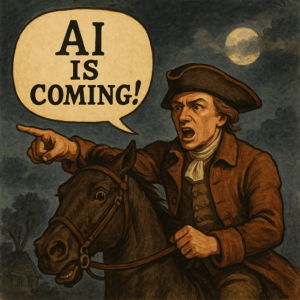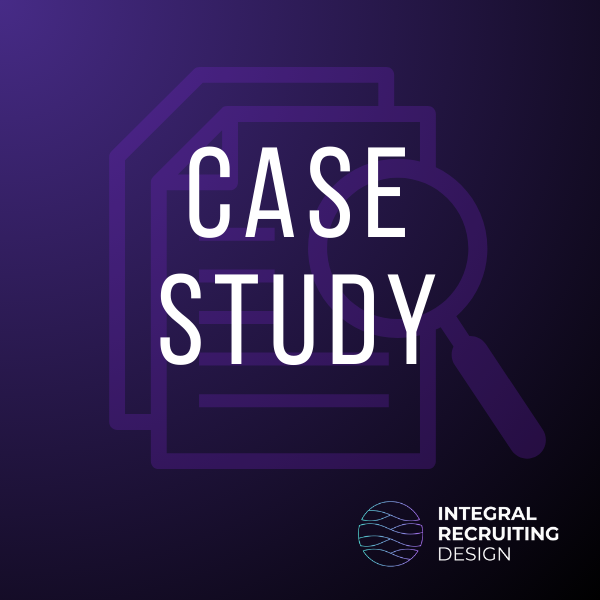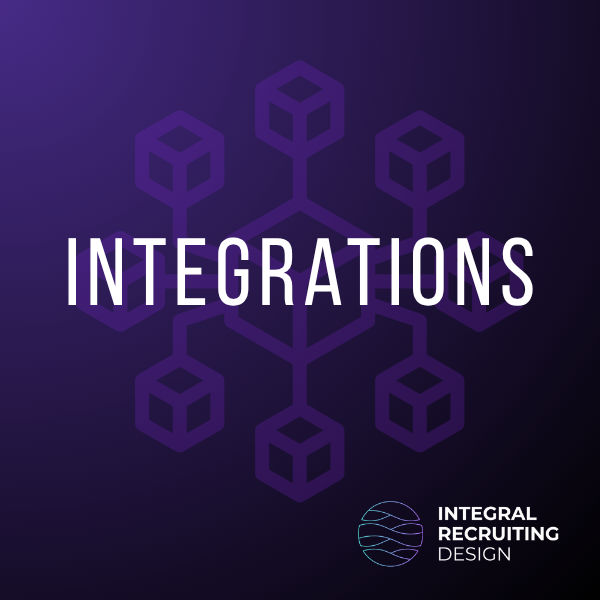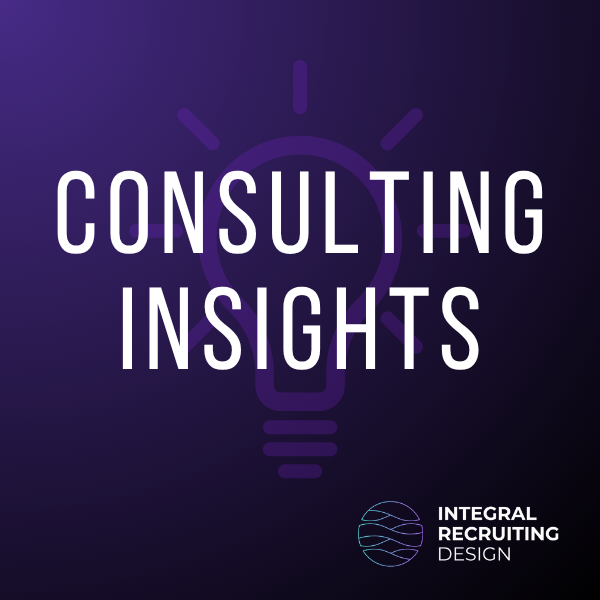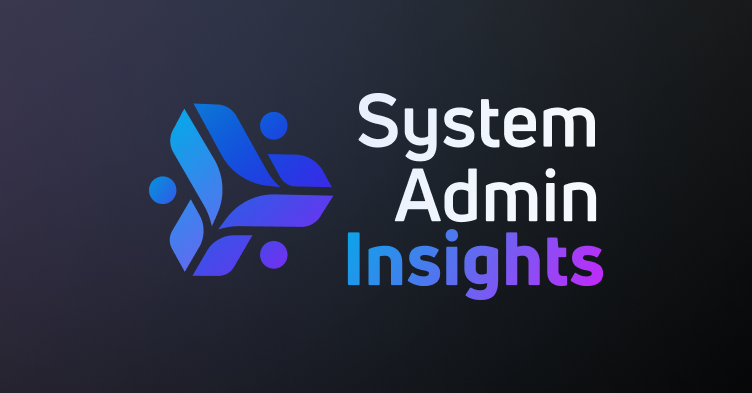It’s easy to pinpoint the exact moment when the seed for System Admin Insights was planted. The year was 2019. Harvard Business Review had just released a cover story on artificial intelligence, splashed across newsstands with bold predictions about how AI would transform industries. Like many, I skimmed the article with mild interest and a healthy dose of skepticism. “I’ll believe it when I see it,” I remember thinking, casually dismissing the hype.
Little did I know that within months, a single staff meeting would completely shift my perspective and ultimately set me on the path to founding what would ultimately become System Admin Insights (SAI).
The Wake-Up Call
At the time, I was working as an iCIMS System Administrator at a nonprofit in New York City. I had just completed my first major implementation project, feeling that unique blend of exhaustion and satisfaction that comes with successfully launching a new technology system. The organization, Good Shepherd Services, had taken a chance on me, and I was proud of what we’d accomplished together.
My supervisor was a guy named Ray, a former Wall Street HR director who had transitioned into the nonprofit sector. Ray was the reason I was there in the first place and became my first business mentor. With his background in financial services, he carried himself with what I’d describe as “Wall Street swagger”—direct, confident, and bringing a refreshingly different perspective to our nonprofit culture.
Ray saw something in me that others hadn’t: he recognized my technical aptitude and brought me in specifically to lead that first iCIMS implementation.
I owe much of my professional success to Ray. He was my first business mentor, teaching me not just the technical aspects of HR systems but how they connected to broader strategy and outcomes. Day after day, he stayed after hours with me to talk HR, HR tech, organization development, and business strategy, giving generously of his time and knowledge to help me grow.
One spring morning in 2019, Ray strode into our regular staff meeting with the confidence of someone holding cards the rest of us couldn’t see. Without preamble or cushioning, he made an announcement that would change the trajectory of my career:
“AI’s coming,” he declared, scanning the room with intensity. “You’re all going to be out of jobs in three years.”
The room fell silent. I remember thinking, “Well, that’s one way to deliver news…” as I watched my colleagues’ expressions shift from confusion to concern. Ray had his own style of communication, straightforward and to the point, and this moment was certainly characteristic of his approach.
While others in the room might have dismissed his prediction as hyperbole, something about his confidence made me pause. Behind the blunt delivery was a perspective informed by decades in the business world, including Wall Street, where he’d witnessed how technology could fundamentally transform entire industries and roles. What if he was seeing something the rest of us weren’t ready to acknowledge?
A Moment of Reflection
That night, I couldn’t sleep. Ray’s words kept echoing in my mind. I pulled out my laptop and began researching in earnest—not the sensationalist headlines, but the actual technological developments in AI and automation that were already underway.
I thought about my own role. As an iCIMS administrator, much of my day was spent on tasks that, when broken down, followed predictable patterns and rules. Configuring workflows. Setting up approval chains. Troubleshooting data feeds. Creating reports.
How much of this work could be automated with the right algorithms? Probably a significant portion, I had to admit. But that didn’t mean human expertise would become irrelevant. It meant the nature of that expertise needed to evolve.
I started envisioning how my role might transform. If the routine configuration and troubleshooting were handled by AI, what would be left for me? The answer came clearly: strategy, innovation, and what I would later learn is called “orchestration.”
At the time, I didn’t have that specific term, but I was imagining a role that involved overseeing technology doing all the “clicky things” while I focused on the bigger picture. Understanding the business needs deeply enough to design systems that truly served people. Translating between technical possibilities and human requirements. Orchestrating an increasingly complex ecosystem of tools and platforms.
This wasn’t a threat. It was an opportunity—but one that required preparation.
Birth of a Mission
Fast forward to 2020. COVID had suddenly sent all of us home. I found myself isolated in my apartment, working remotely and feeling increasingly disconnected from my colleagues. The loneliness of being an HR technology specialist, often a department of one, was amplified tenfold during lockdown. I longed for connection with others who understood the unique challenges of my role, people I could learn from and grow with.
Out of that need for connection, I started hosting informal Zoom meetings for other iCIMS administrators. It began simply: I’d post interesting hacks and workarounds I’d discovered in the system on LinkedIn, then invite other admins to join a call to discuss them.
What started as technical knowledge-sharing quickly evolved into something more meaningful: a community of peers facing similar challenges, swapping stories, and supporting each other through the isolation of the pandemic.
At one point, a member of our growing community asked if I would be willing to fill in for her as an iCIMS admin during a planned leave of absence. This was the momentum I needed to launch out as a consultant, giving me the confidence to take that first entrepreneurial step.
Meanwhile, the Zoom gatherings continued to grow in popularity. These sessions became the embryonic form of what would eventually become System Admin Insights. As my profile grew in the community, I began receiving more consulting opportunities. But I knew I wanted to build something beyond just a consulting practice.
Finding Purpose Beyond Profit
Coming from the nonprofit and education sectors, I was fundamentally mission-driven. Yes, I was building a business, but it needed to be one with purpose at its core. The financial sustainability was important, but the mission had to come first. I needed to articulate that mission clearly, not just for potential clients, but for myself.
The true mission of SAI came to me over time. Not in a flash, but over the next few years. Ray’s warning from years earlier had proven partially true—automation was indeed transforming HR roles, though not with the speed or totality he had predicted. The pandemic had accelerated digital transformation across industries, and suddenly organizations were scrambling to adapt their people processes to remote work environments.
In late 2022, after countless conversations with community members and seeing the rapid advancements in AI tools, the mission crystallized with newfound clarity. I realized what SAI needed to be: not just a business, but a lifeline and community for HR ops professionals navigating this massive transition together.
The mission became clear: to ensure that any SAI community member has the resources—if they choose to take advantage of them—to grow into the job of the future.
That job is the HR Systems Orchestration Engineer. It’s a role that transcends traditional system administration. “Orchestration” is a term that’s getting thrown around a lot these days, but back in 2019 when Ray made his prediction, I wasn’t familiar with it. What I was envisioning was exactly that though: professionals who would be the conductors of a symphony of AI bots, each performing those specialized “clicky” functions within the HR technology ecosystem, while the engineer focused on higher-level strategy and innovation.
The HR Systems Orchestration Engineer
What exactly does this role entail? The HR Systems Orchestration Engineer understands that their value isn’t in performing repetitive tasks that AI can handle more efficiently. Their value lies in their uniquely human capabilities:
- Strategic thinking: Understanding how technology serves business outcomes
- Integration knowledge: Building bridges between systems to create seamless experiences
- Analytics expertise: Turning data into insights that drive decisions
- Change management skills: Helping humans adapt to technological transformation
- Creative problem-solving: Finding solutions that algorithms can’t see
- Business acumen: Calculating and communicating ROI for technology investments
These are the skills that can’t be easily automated, at least not in the foreseeable future. They’re the skills that make a professional not just valuable but essential as organizations navigate increasingly complex technological landscapes.
The Warning Signs
And yet, despite what seems to me to be the obvious future of our profession, I see concerning patterns. For me, the path forward is clear: HR professionals must evolve into orchestrators of technology rather than mere operators of systems. This isn’t just speculation, it’s already beginning to happen at forward-thinking organizations. But there are many professionals—talented, dedicated people—who are resisting this evolution rather than embracing it.
The System Veteran
I think about a system administrator I’ve encountered at a mid-sized company. This person has been managing the same HRIS for fifteen years. They know every quirk of the system, every workaround for its limitations. They’re reliable and consistent.
But this professional hasn’t really learned a significant new skill in years. They view AI and automation tools with suspicion rather than curiosity. They’re comfortable in their routines and see no reason to change them.
The Passive Technologist
Then there’s the newer professional who’s technically proficient but sees their role as purely reactive—implementing what others request without questioning the strategic value. They can build complex workflows and generate detailed reports, but they never ask “why” or “what if.” They’re so focused on the technical aspects that they miss opportunities to become strategic partners to the business.
I worry about professionals like these. Because when business leaders are forced to make tough decisions about headcount—and those decisions will come as automation capabilities expand—these individuals will be among the first to go. Not because they aren’t knowledgeable about their current systems, but because that knowledge alone is no longer enough.
The Path Forward
These warning signs aren’t reasons for despair—they’re calls to action. The gap between where many HR operations professionals are today and where they need to be tomorrow isn’t insurmountable, but it does require intentional growth and adaptation.
This realization crystallized the true mission of SAI in my mind. We’re not just building a consulting practice or a knowledge-sharing platform. We’re creating a lifeline for HR operations professionals navigating this technological sea change—a community where they can develop the skills that will make them not just relevant but essential in an AI-augmented workplace.
Developing Orchestration Skills
The transition to becoming an Orchestration Engineer begins with a mindset shift. It requires seeing yourself not as a system operator but as a strategic partner who leverages technology to drive business outcomes. This means:
- Developing a deeper understanding of your organization’s business goals and how HR technology supports them
- Cultivating curiosity about emerging technologies and their potential applications
- Building bridges between technical possibilities and human needs
- Learning to communicate in terms of business impact rather than technical features
These skills aren’t typically taught in traditional HR or IT training programs. They’re developed through intentional practice, mentorship, and community learning—exactly the kind of environment we’ve created at SAI.
I want SAI members to be the last people considered for layoffs when those difficult decisions come. Not because they’re desperately clinging to outdated roles, but because they’ve transformed themselves into indispensable strategic partners who know how to orchestrate technology for maximum business impact.
This mission extends beyond individual career survival, though that’s certainly important. It’s about preserving the human element at the heart of human resources, even as our technological tools grow more sophisticated. It’s about using AI to enhance human potential rather than diminish it, creating HR functions that are more strategic, more impactful, and more human-centered than ever before.
When HR professionals embrace their evolution into orchestrators, everyone wins: the professionals themselves gain greater job security and satisfaction, their organizations benefit from more strategic talent management, and the employees they serve receive more personalized, responsive support. That’s the future we’re building toward at System Admin Insights.
The “Tri-Mutual Benefit”
What makes this mission particularly powerful is what my colleague Jenny Fair calls its “tri-mutual benefit”:
- It benefits the individual professional who gains not just job security but greater career satisfaction through continuous learning and growth
- It benefits the organizations they serve by providing them with more strategic, innovative talent who can truly leverage technology for competitive advantage
- And yes, it benefits SAI as a business through the revenue generated from our educational offerings and consulting services
When you create something that simultaneously serves the individual, their employer, and your own business goals, you’ve found what Jenny calls “a home”—a sustainable model that creates value at every level.
Looking Ahead
As I reflect on the journey from that startling staff meeting in 2019 to where SAI stands today, I’m filled with both pride and a sense of urgency. We’ve built something meaningful: a community of professionals committed to growth and adaptation in the face of technological change.
But the pace of that change is only accelerating. The AI revolution that was just beginning to emerge when Ray made his provocative prediction is now in full swing. Tools like Claude, ChatGPT, and other large language models are already transforming how we work with systems, data, and each other.
The window for adaptation isn’t closing, but it is narrowing. The professionals who will thrive in the coming years aren’t necessarily the ones with the most technical knowledge today—they’re the ones most willing and able to evolve their skills continuously.
Join the Transformation
That’s why I’m more committed than ever to the mission of SAI: to equip HR ops professionals with the mindset, skills, and resources they need to become those indispensable HR Systems Orchestration Engineers.
Because in a world where routine tasks are increasingly automated, the truly irreplaceable professionals aren’t the ones who perform tasks—they’re the ones who orchestrate systems to achieve human-centered outcomes.
That’s the future I’m building toward with System Admin Insights. And if you’re an HR ops professional reading this, I invite you to join us on this journey of transformation. Connect with our community through our weekly meetups, explore our training programs, or simply reach out for a conversation about your own professional evolution.
The future belongs to those who prepare for it today. Let’s prepare for it together.
